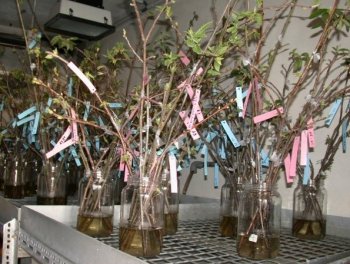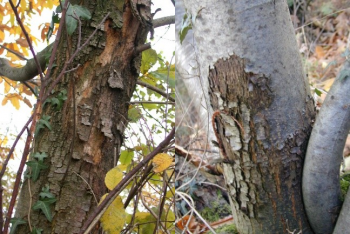Participatory selection of hardy and ink-disease resistant European chestnut trees
The objectives of this participative research program are:
1: Select surviving European chestnut trees within strong impacted areas by the ink disease
2: Evaluate their resistance against Phytophthora in laboratory, and verify their belonging to sweet chestnut, the species Castanea sativa.
3: Use the individuals showing the best resistance capacities against ink disease (“elite trees”) as seeds producers in seed orchards.
The expected results are:
- Reconquest and renewal of the actually declining chestnut orchards
- Decrease of...


